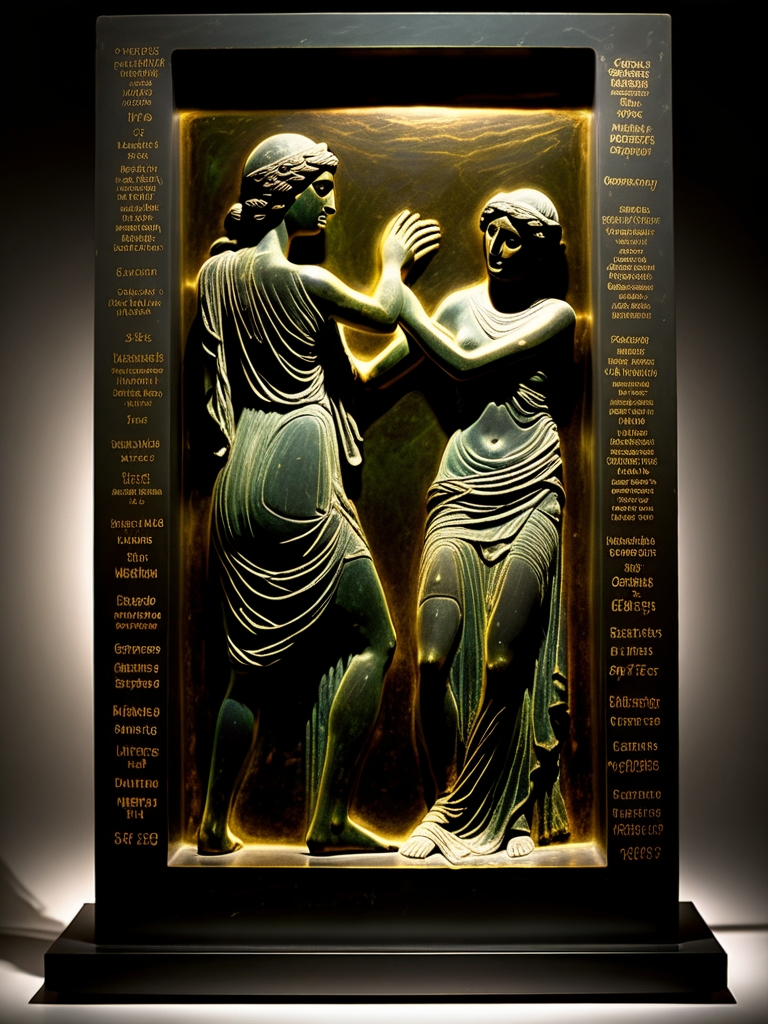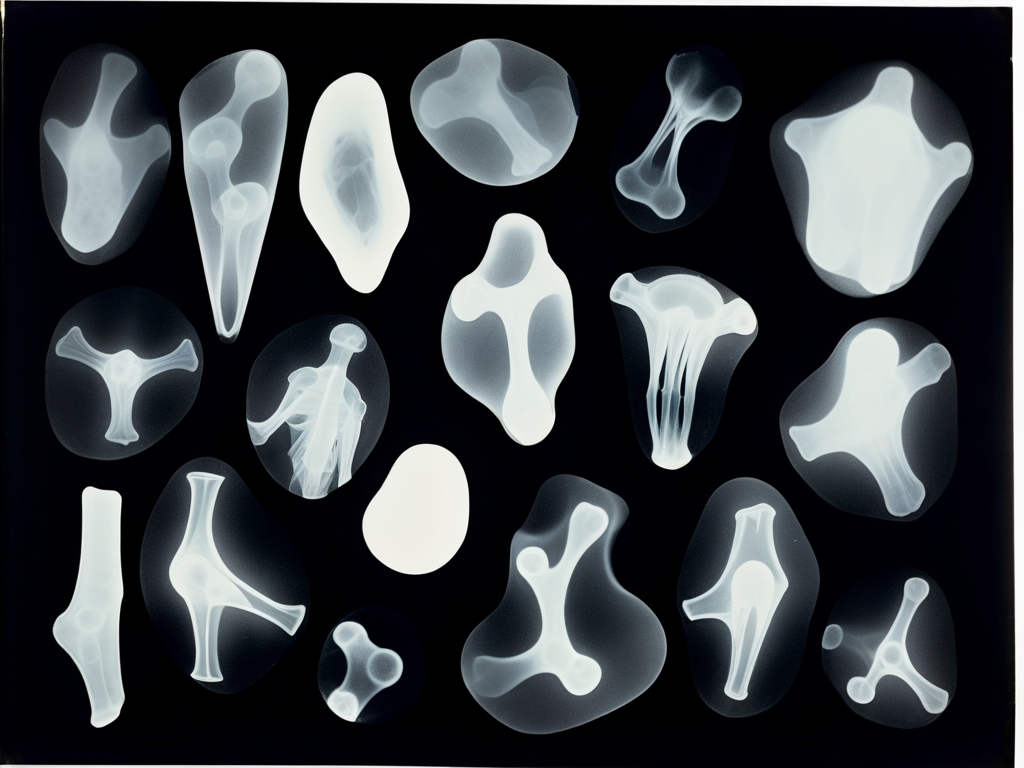The Tailor's Flickering Stone

In the shadowed recesses of the Ravensfield Collection, where bronze lamplight flickers faintly against ancient stone, stands a funerary stele of Greek origin, framed by a rectangular border etched with delicate golden script now faded by time. Yet this is no ordinary memorial: its surface undulates with an eerie luminescence that mocks the gallery’s steadfast illumination. Visitors find themselves arrested—mesmerized and uneasy—as they witness the monument’s restless glow, which renders photography futile and confounds even the most modern devices.
This bronze relief portrays two figures clad in flowing classical robes, caught mid-gesture as if eternally reaching toward one another. While art historians date the workmanship to the fourth century BCE, metallurgical analysis casts doubt—the alloy contains elements unknown to ancient smiths. More unnerving is how its shimmering intensifies when viewers confront moments of profound personal revelation.
Local lore from Thessaly tells of Melantho—a tailor whose deft hands wove magic into woolen threads. Her workshop was alive with rhythmic shuttles and hushed confidences from women seeking her skillful embroidery on veils meant to guard brides against fate's cruelty. Children gathered wide-eyed at her feet as she stitched protective symbols that seemed more charm than cloth.
The stele commemorates her passing, but whispers among villagers reveal a darker tale: Melantho’s final commission came from a grieving mother who sought a burial shroud for her fallen son, claimed in border skirmishes. The mother’s anguish seeped like poison into Melantho’s dreams; night after night echoing wails haunted her work.
As she labored over that funeral cloth, something changed—the threads whispered secrets: glimpses of terror frozen in boyish eyes; cold bronze spearheads piercing flesh; crimson staining white linen like bloodstain upon bloodstain. The talismans she had embroidered all her life suddenly betrayed their purpose—mockeries powerless against death’s encroachment.
Consumed by grief-cloaked knowledge, Melantho was found collapsed at her loom days later—her pale fingers still mirroring weaving motions though no fabric remained. Her hair had turned stark white overnight; within hollow eyes dwelt recognition too vast for mortal hearts—the sight beyond life itself.
"The bronze remembers what flesh forgets—that every thread we weave leads inevitably to our shroud." Dr. Evelyn Thorne, Thanatological Archaeologist
Her final gift was woven still: a burial cloth unlike any other—threads absorbing light instead of reflecting it—that shimmered with an unearthly aura blending solace and disquiet in equal measure.
When Melantho breathed her last three days hence, only that stele remained behind—etched mysteriously not long ago with forms bearing her likeness alongside another figure stretching toward life itself—though no sculptor had ever been tasked. Even now it flickers gently as if capturing something profound—a soul locked within bronze forever reaching out beyond death’s cold grip.
Ravensfield acquired this enigmatic relic through Dr. Cornelius Ashworth who uncovered it in a monastery nestled deep within Thessaly where monks whispered of answered prayers said before its gleaming frame—and fearsome truths murmured about fates yet to come that mortals dare not fully face.
Present-day visitors tell similar tales: sudden clarity of their own fragile mortality; visions haunting their nights of loved ones long gone; an urgent compulsion to leave an imprint before time claims all things silent beneath this bronze-encased vigil—a pulsating heart-beat measured not in seconds or years but eternity under shadowed light.




